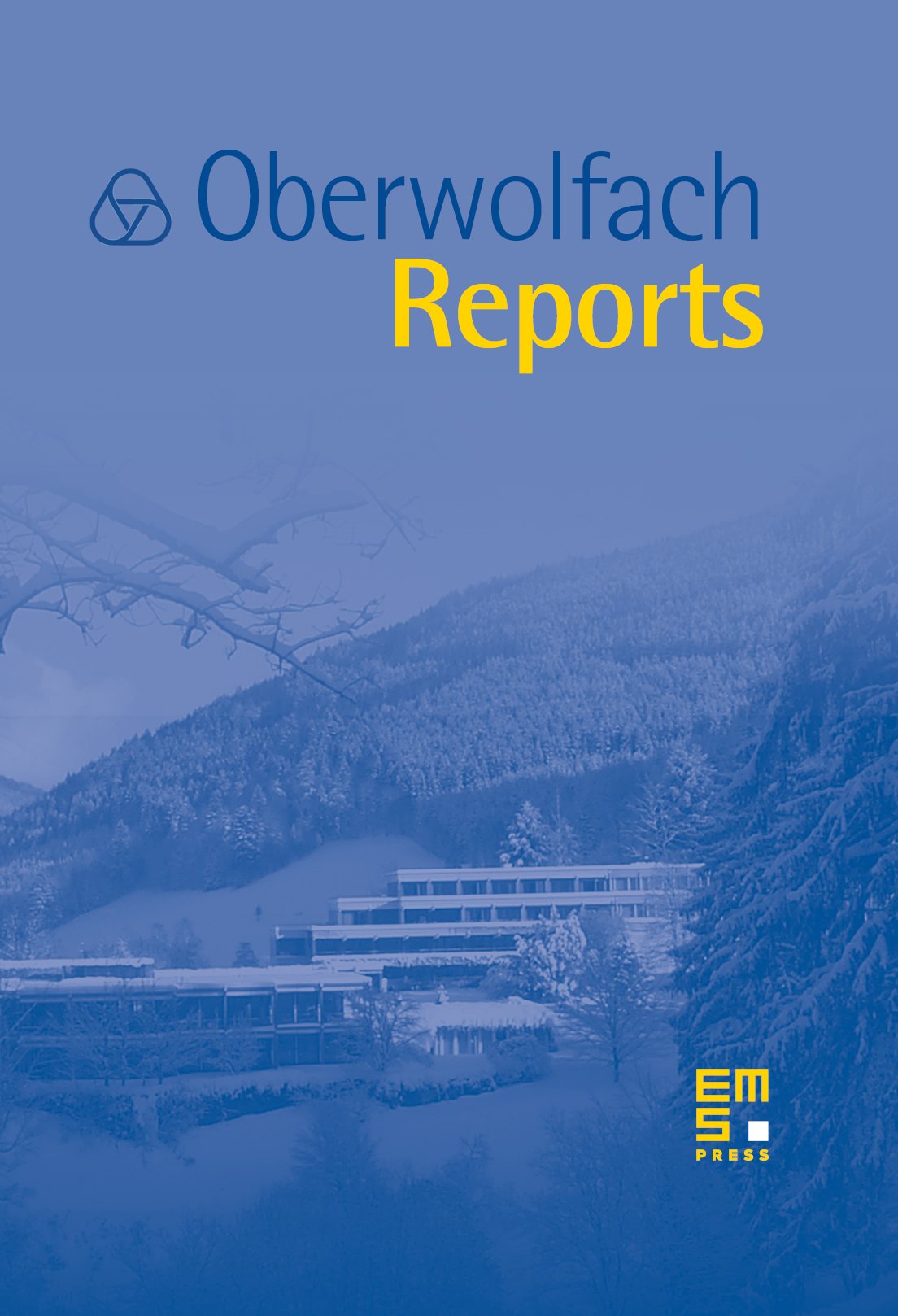Mini-Workshop: Amalgams for Graphs and Geometries
Alexander A. Ivanov
Imperial College, London, UKSergey V. Shpectorov
Bowling Green State University, USA

Abstract
This meeting was well attended with 17 participants with broad geographic representation from 3 continents. There were 16 talks during the workshop including an invited talk by Anda Degeratu a participant in the competing String Theory workshop. The method of group amalgams is a highly effective way of classifying mathematical objects possessing high degrees of symmetry. The idea of the method is separation of the study of the local structure of the acting group from the question of it's global isomorphism type. The method of group amalgams has been successfully applied to problems in graph theory and diagram geometry. It also featured prominently in group theory. For example, the fact that the Monster sporadic simple group is the universal completion of the amalgam associated with the tilde geometry formed the foundation of the solution of the famous -group conjecture that the presentation defines the Bimonster (the direct product of two copies of the Monster sporadic simple group extended by a group of order 2). J.H. Conway coined for this theorem the name 'NICE' where \textbf{N} is for \textbf{N}orton, \textbf{I} for \textbf{I}vanov, \textbf{C} for \textbf{C}onway and \textbf{E} for anyone \textbf{E}lse. The proof of the NICE theorem based on the method of group amalgams is presented in the two volume monograph of the organisers published by Cambridge University Press. \par Recently a dramatic progress was made within the study of flag-transitive diagram geometries. The importance of the notion of \textit{constrained} completions of amalgams was realised. Within this framework many geometries of sporadic groups were characterised as the constrained completions of suitable amalgams. This approach also gives a general criterion about possible shapes of diagrams of flag-transitive geometries. This enables the area of diagram geometries to leave it's "botanical" stage of example collection and enter the stage of theory building. \par Among other applications we would like to mention recent applications of the amalgam method to the cohomologies of finite groups. These ideas were described in the notes of M. Aschbacher on calculation of the Schur multiples of some finite simple groups. \par During the workshop we had discussed in detail the proofs of a number of results obtained along the lines of the amalgam method, as well as of directions of future research. We believe that the abstract of the talks given at the workshop facilitate for the younger mathematicians access to these extremely important, yet very technically complex tools of mathematical research.
Cite this article
Alexander A. Ivanov, Sergey V. Shpectorov, Mini-Workshop: Amalgams for Graphs and Geometries. Oberwolfach Rep. 1 (2004), no. 2, pp. 1311–1342
DOI 10.4171/OWR/2004/25